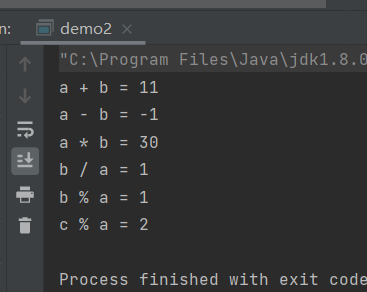📋 preface 📋
💝 Blog home page: Red eye Aromatherapy_ CSDN blog - big data, computer theory, MySQL Blogger💝
✍ This article was originally written by Yu Xia [Hongmu aromatherapy] and was first launched in CSDN ✍
🤗 Biggest wish in 2022: [serve millions of technical people] 🤗
💝 Initial environment address:[ spark environment construction (idea version)_ Red eye Aromatherapy - CSDN blog]💝
Environmental requirements
Environment: win10
Development tool: IntelliJ IDEA 2021.2
maven version: 3.6.3
catalogue
Scala if else branch statement
Create a test class [day1/demo2.scalc], and select Object as the type

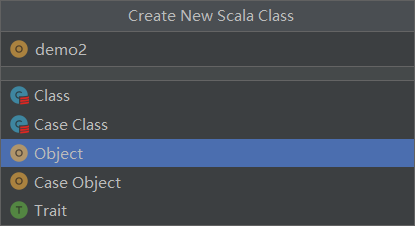
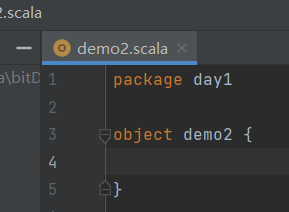
Scala operator
An operator is a symbol that tells the compiler to perform specified mathematical and logical operations.
Scala is rich in built-in operators, including the following types:
-
Arithmetic operator
-
Relational operator
-
Logical operator
-
Bitwise Operators
-
Assignment Operators
Next, we will introduce the application of the above operators in detail.
Arithmetic operator
The following table lists the arithmetic operators supported by Scala.
Suppose variable A is 10 and B is 20:
| operator | describe | example |
|---|---|---|
| + | plus | The result of A + B operation is 30 |
| - | minus sign | The result of A - B operation is - 10 |
| * | multiplication sign | The result of A * B operation is 200 |
| / | division sign | The result of B / A operation is 2 |
| % | Surplus | B% a operation result is 0 |
example
package day1
object demo2 {
def main(args: Array[String]) {
var a = 5;
var b = 6;
var c = 7;
var d = 8;
println("a + b = " + (a + b) );
println("a - b = " + (a - b) );
println("a * b = " + (a * b) );
println("b / a = " + (b / a) );
println("b % a = " + (b % a) );
println("c % a = " + (c % a) );
}
}
Relational operator
The following table lists the relational operators supported by Scala.
Suppose variable A is 10 and B is 20:
| operator | describe | example |
|---|---|---|
| == | be equal to | (A == B) the operation result is false |
| != | Not equal to | (a! = b) the operation result is true |
| > | greater than | (a > b) the operation result is false |
| < | less than | (a < b) the operation result is true |
| >= | Greater than or equal to | (a > = b) the operation result is false |
| <= | Less than or equal to | (a < = b) the operation result is true |
example
package day1
object demo2 {
def main(args: Array[String]) {
var a = 5;
var b = 6;
println("a == b = " + (a == b) );
println("a != b = " + (a != b) );
println("a > b = " + (a > b) );
println("a < b = " + (a < b) );
println("b >= a = " + (b >= a) );
println("b <= a = " + (b <= a) );
}
}
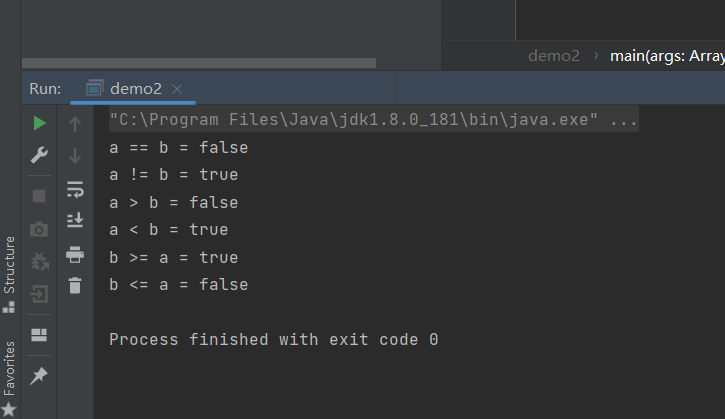
Logical operator
The following table lists the logical operators supported by Scala.
Suppose variable A is 1 and B is 0:
| operator | describe | example |
|---|---|---|
| && | Logic and | (A & & B) operation result is false |
| || | Logical or | (a | b) the operation result is true |
| ! | Logical non | ! (A & & B) operation result is true |
example
package day1
object demo2 {
def main(args: Array[String]) {
var a = true;
var b = false;
println("a && b = " + (a&&b) );
println("a || b = " + (a||b) );
println("!(a && b) = " + !(a && b) );
}
}
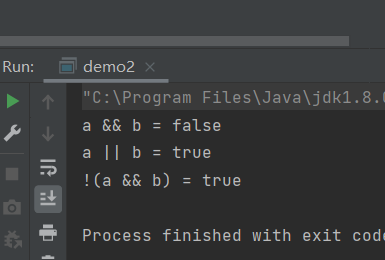
Assignment Operators
The following lists the assignment operators supported by the Scala language:
| operator | describe | example |
|---|---|---|
| = | A simple assignment operation that assigns the right operand to the left operand. | C = A + B assigns the operation result of A + B to C |
| += | The left and right operands are added and then assigned to the left operands. | C += A is equivalent to C = C + A |
| -= | Subtract and then assign values. Subtract the left and right operands and assign values to the left operands. | C -= A is equivalent to C = C - A |
| *= | The left and right operands are multiplied and then assigned to the left operand. | C *= A is equivalent to C = C * A |
| /= | Divide and assign values. Divide the left and right operands and assign values to the left operands. | C /= A is equivalent to C = C / A |
| %= | The left and right operands are summed and then assigned to the left operands. | C %= A is equivalent to C = C % A |
| <<= | Shift the bit to the left and then assign the value | C < < = 2 is equivalent to C = C < < 2 |
| >>= | Shift the bit to the right and then assign the value | C > > = 2 is equivalent to C = C > > 2 |
| &= | Assignment after bitwise and operation | C & = 2 is equivalent to C = C & 2 |
| ^= | Assign value after bitwise exclusive or operator | C ^= 2 is equivalent to C = C ^ 2 |
| |= | Assign value after bitwise OR operation | C | 2 is equivalent to C = C | 2 |
example
package day1
object demo2 {
def main(args: Array[String]) {
var a = 5;
var b = 6;
var c = 0;
c = a + b;
println("c = a + b = " + c );
c += a ;
println("c += a = " + c );
c -= a ;
println("c -= a = " + c );
c *= a ;
println("c *= a = " + c );
a = 10;
c = 15;
c /= a ;
println("c /= a = " + c );
a = 10;
c = 15;
c %= a ;
println("c %= a = " + c );
c <<= 2 ;
println("c <<= 2 = " + c );
c >>= 2 ;
println("c >>= 2 = " + c );
c >>= a ;
println("c >>= a = " + c );
c &= a ;
println("c &= 2 = " + c );
c ^= a ;
println("c ^= a = " + c );
c |= a ;
println("c |= a = " + c );
}
}
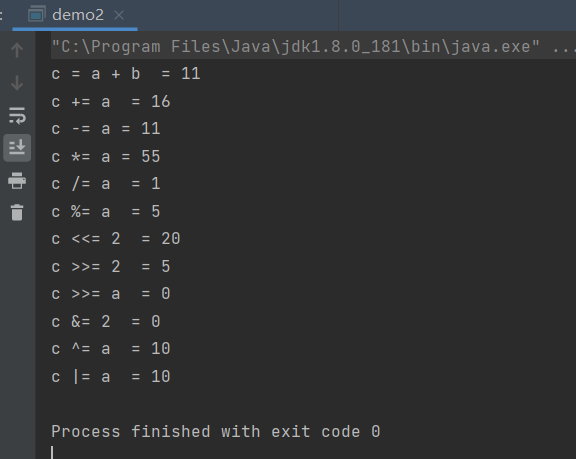
Operator priority
Example: multiply and divide first, then add and subtract. Brackets look first.
Check the following table. The priority decreases from top to bottom. The top has the highest priority, and the comma operator has the lowest priority.
| category | operator | Relevance |
|---|---|---|
| 1 | () [] | Left to right |
| 2 | ! ~ | Right to left |
| 3 | * / % | Left to right |
| 4 | + - | Left to right |
| 5 | >> >>> << | Left to right |
| 6 | > >= < <= | Left to right |
| 7 | == != | Left to right |
| 8 | & | Left to right |
| 9 | ^ | Left to right |
| 10 | | | Left to right |
| 11 | && | Left to right |
| 12 | || | Left to right |
| 13 | = += -= *= /= %= >>= <<= &= ^= |= | Right to left |
| 14 | , | Left to right |
Scala if else branch statement
if else statement is a code block that determines the execution result (True or False) of one or more statements.
You can simply understand the execution process of conditional statements through the following figure:
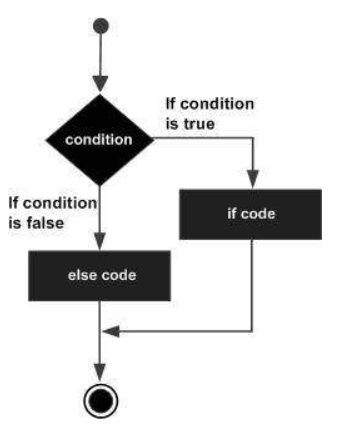
if statement
if statements are composed of Boolean expressions and subsequent statement blocks.
grammar
The syntax format of if statement is as follows:
package day1
object demo2 {
def main(args: Array[String]) {
var isf=true;
if(isf)
{
// If the Boolean expression is true, the statement block is executed
print("is true");
}
}
}
if...else statement
if statement can be followed by else statement, and the statement block in else can be executed when the Boolean expression is false.
grammar
if... The syntax format of else is as follows:
package day1
object demo2 {
def main(args: Array[String]) {
var isf=true;
if(isf)
{
// If the Boolean expression is true, the statement block is executed
print("is true");
}else {
print("is false");
}
}
}
if...else if...else statement
The if statement can be followed by else if Else statement, which is very useful in the case of multiple conditional judgment statements.
grammar
if...else if...else syntax format is as follows:
package day1
object demo2 {
def main(args: Array[String]) {
var i=100;
if(i>90&i<=100){
print("excellent");
}else if(i>=80){
print("good");
}else if(i>=70){
print("commonly");
}else if(i>=60){
print("pass");
}else{
print("fail,");
}
}
}

summary
Here is the basic Scala syntax tutorial about spark. 2. Operators and branch statements (idea version) are over
I hope it can help you.
Welcome to triple click, thank you.
